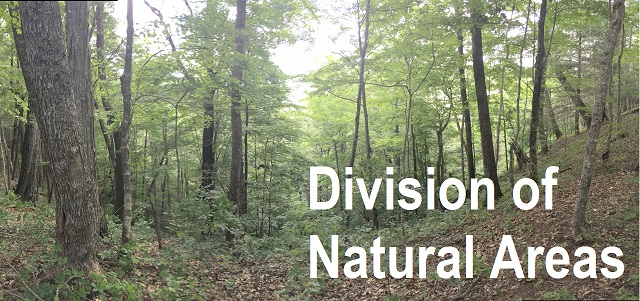Title
Temporal and ecological patterns of flowering dogwood mortality in the mixed mesophytic forest of eastern Kentucky
Document Type
Article
Publication Date
2000
Abstract
Since its discovery in 1977, the fungal pathogen Discula destructiva (Redlin) has depressed flowering dogwood (Cornus florida L.) populations throughout most of its native range. We examined the impacts of the Cornus florida-Discula destructiva disease complex in an old-growth forest and a second-growth forest focusing on long-term trends in flowering dogwood mortality and how those trends were manifested across a range of ecological communities. The study sites were located on the Cumberland Plateau of southeastern Kentucky and were similar in terms of climate and topography. In the second-growth forest flowering dogwood stem density declined significantly from 120 stems/ha in 1992 to 62 stems/ha in 1998 (48%, 8% per year), coincident with our expectations for dogwood anthracnose-related mortality. However, in the old-growth forest, flowering dogwood stem density declined uniformly over a much longer period: 106 stems/ha (1979), 68 stems/ha (1989), and 42 stems/ha (1998; 60%, 3.1% per year). Dogwood anthracnose was not known to be present in eastern Kentucky between 1979 and 1989; therefore, it cannot be implicated as the agent individually responsible for all of the flowering dogwood mortality in the old-growth forest. In both forests, dogwood stem density and mortality were concentrated in the xeric forest communities. This concentration of mortality in drier communities and the long-term trend in mortality contradict prevailing ideas about the impacts and site characteristics of dogwood anthracnose. Observations of the degree of anthracnose infection among mature stems, saplings and seedlings suggest that the current decline in the flowering dogwood population will continue into the next generation. This study demonstrates that seemingly clear trends in anthracnose-related mortality may be blurred by long-term mortality trends.
Recommended Citation
McEwan, R. W., R. N. Muller, M. A. Arthur, and H. H. Housman. 2000. Temporal and ecological patterns of flowering dogwood mortality in the mixed mesophytic forest of eastern Kentucky. Journal of the Torrey Botanical Society 127:221-229. doi:10.2307/3088759



Comments
"This study (# 99-09-35) is connected with a project of the Kentucky Agricultural Experiment Station and is published with the approval of the director. This is Publication No. 15 of Lilley Cornett Woods: Appalachian Research Station of Eastern Kentucky University, Richmond, Kentucky" (p. 221)